9 Cosmetic Plants You Can Have in Your Garden and in Pots


Reviewed and approved by the doctor Leonardo Biolatto
Hair lighteners with chamomile, moisturizers with aloe vera and rose water are some cosmetic recipes that can be prepared at home, as long as you have these and other plants in your garden. The handmade use of them emulates the objective of industries that prefer the natural composition of their products.
Cosmetic crops, besides embellishing exteriors, benefit health and help save the money you would spend on certain creams, lotions and ointments. Let’s learn more about it.
What benefits do you get from cosmetic plants in your garden?
Having at hand herbs, leaves, and flowers useful in the creation of beauty products is a dream that can come true if you dedicate a space in the garden or have pots on the balcony. The purpose is to plant vegetation of aesthetic benefit.
As in medicine, botany has great effects on beauty, thanks to the properties and characteristics of numerous species that contribute to softening, moisturizing, and cleansing the skin. They may also regenerate damaged hair, soothe irritations, fight dandruff and be astringent.
What else do cosmetic plants do for you? Here are just some of their benefits:
- They help relieve inflammation and swelling
- They provide natural perfumes
- Cosmetic plants reduce burn spots
- They intervene in acne treatments
We invite you to read this article, too: Why Is Centella Asiatica Good for the Skin?
Cosmetic plants that you can have in your garden and in pots
Maybe you have plants at home for cosmetic purposes and you don’t know it. Or maybe you want to plant herbs and flowers for that purpose, but need a little guidance. In both cases, take note of the species we recommend that thrive in both pots and soil.
Cosmetic plants in your garden can be used to replace some of the chemicals contained in brand name cosmetics.
1. Chamomile
With ease, chamomile could be the queen of cosmetic plants, as it’s useful for many things, such as those discussed below:
- Hair bleaching
- Improving acne and eczema
- Softening and whitening the skin
- Regenerating the skin after injuries
- As the base of shampoos and conditioners
The International Journal of Molecular Sciences talks about the biological influence of chamomile oil as an antioxidant and anti-inflammatory for the dermis. On the other hand, the Scientific Literature Review for Public Comment highlights variations of Matricaria and Roman chamomile as fragrance enhancers and conditioning agents in cosmetics.
These flowers are especially good in pots, although direct planting in the ground is not impossible. If you have a balcony, display them; in gardens, it’s worth a relatively large plot to plant chamomile.
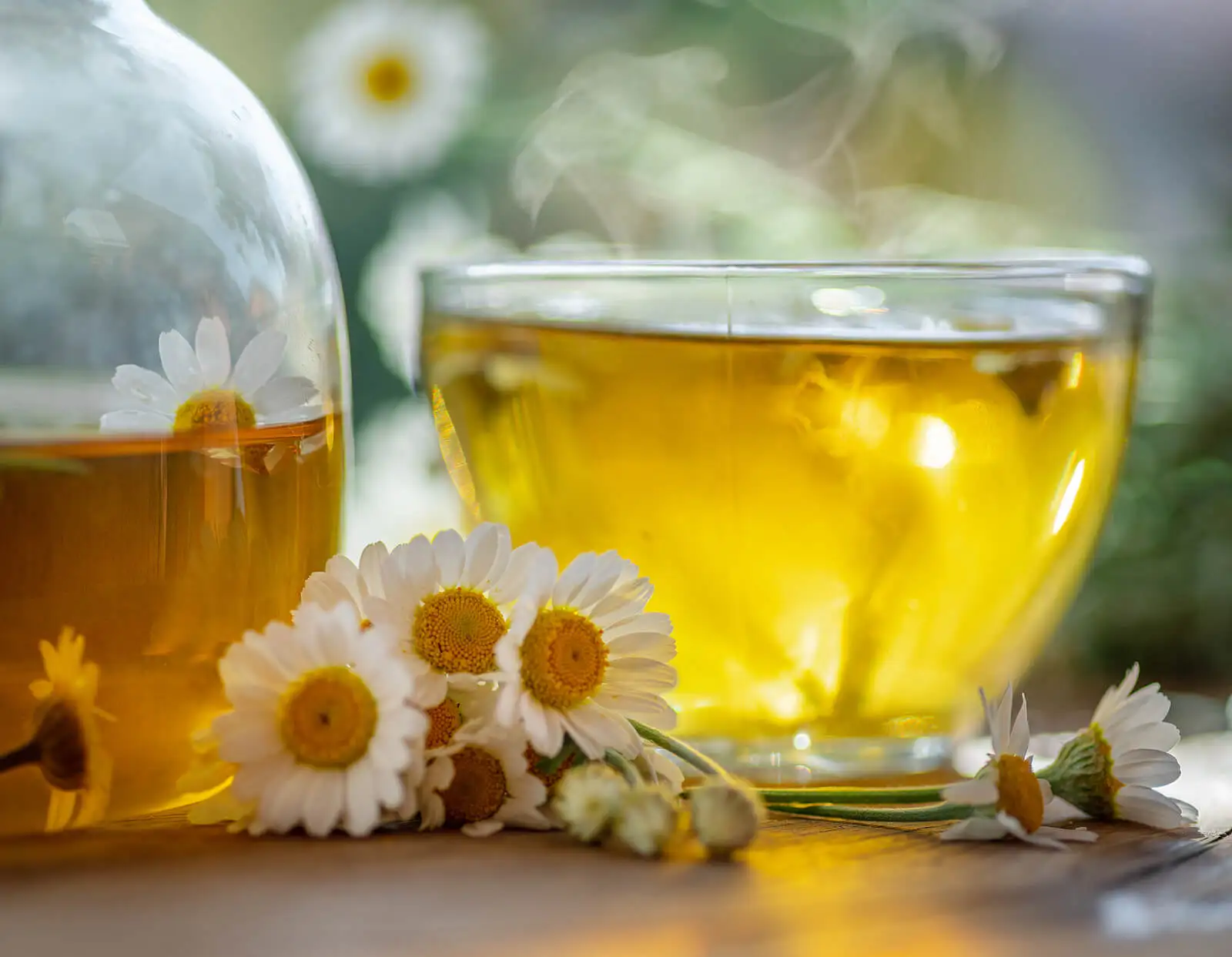
2. Roses
Roses, in their thousands of varieties, are used in scrubs, soaps, tonics, and astringents for the skin. The latter two are usually obtained by mixing with distilled water. Their moisturizing, fragrant and refreshing characteristics make them a favorite in natural cosmetics.
Folia Dermatológica Peruana highlights the Damascus rose and the white and red roses as primordial in essential oils, exclusive to perfumery, and in the aromatization of lotions and creams.
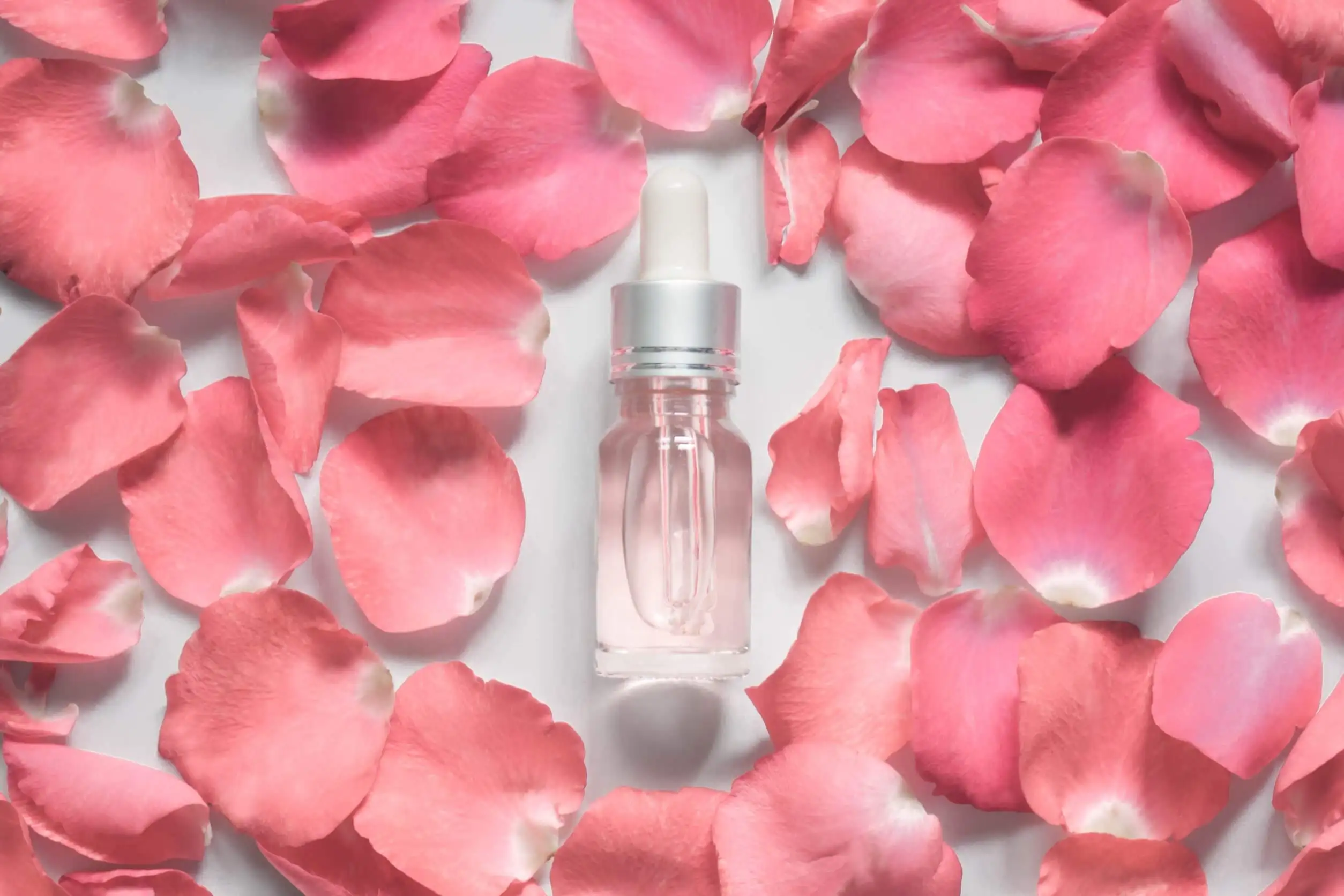
3. Rosehip
Rosehip is a herb that is promised “eternal youth” on commercial labels. It works as an ingredient for lotions that fight stretch marks and restore dermis damaged by burns and scars. It moisturizes the scalp and prevents flaking, as well as dandruff.
It’s planted with cuttings. They do best in plastic pots until they’re tall enough to gain optimal rooting.
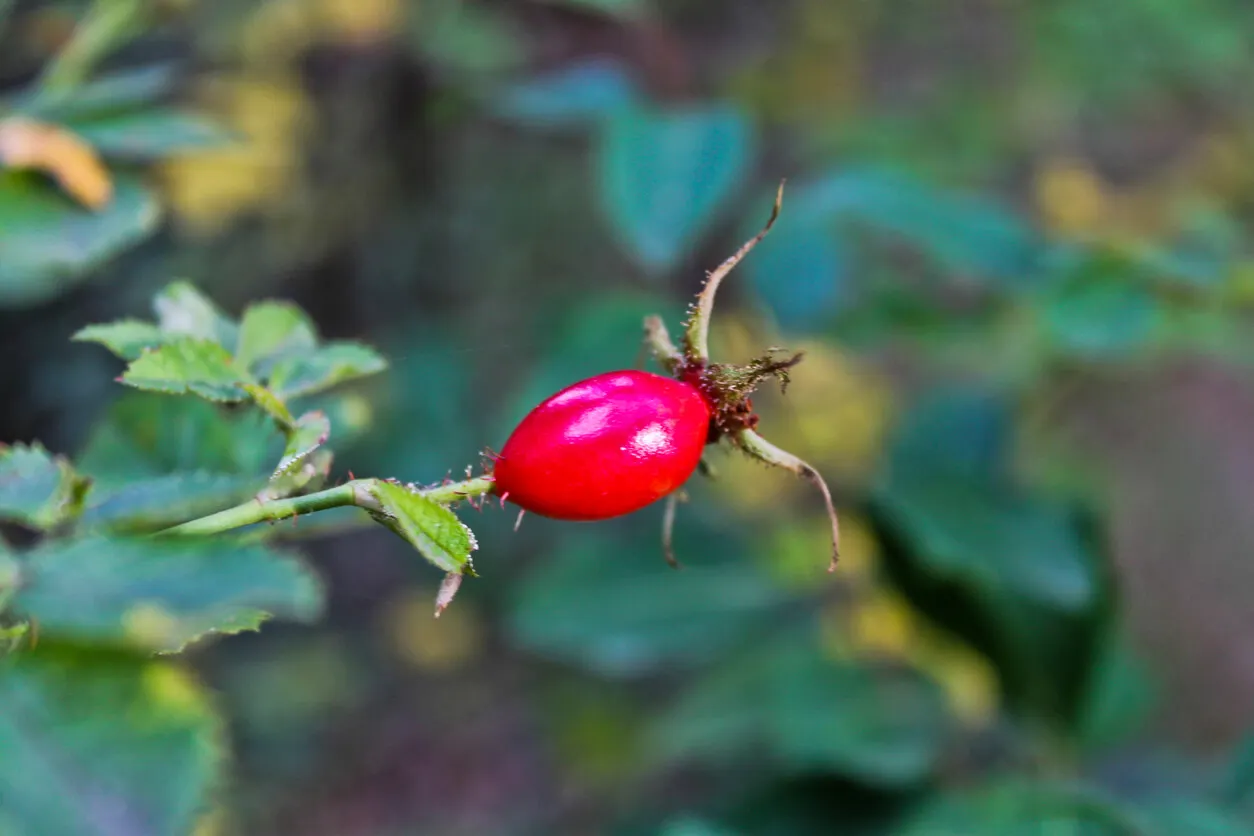
4. Aloe vera
This kind of plant is propagated by seeds and cuttings, preferring calcareous soils with good drainage and appropriate amounts of organic matter, as mentioned in a Natura Medicatrix article (in Spanish). Aloe vera is considered a good remedy for dry, irritated, and highly sensitive skin.
In addition to its cosmetic properties, it has antimicrobial, moisturizing, and anti-inflammatory properties. It contains amino acids, minerals, vitamins, and fatty oils.
According to the Mexican Journal of Chemical Engineering, aloe vera gel (as it is also called) is the base of many soaps, facial creams, shampoos, creams, and other toiletries. Offarm adds that this succulent has emollient properties (article in Spanish).
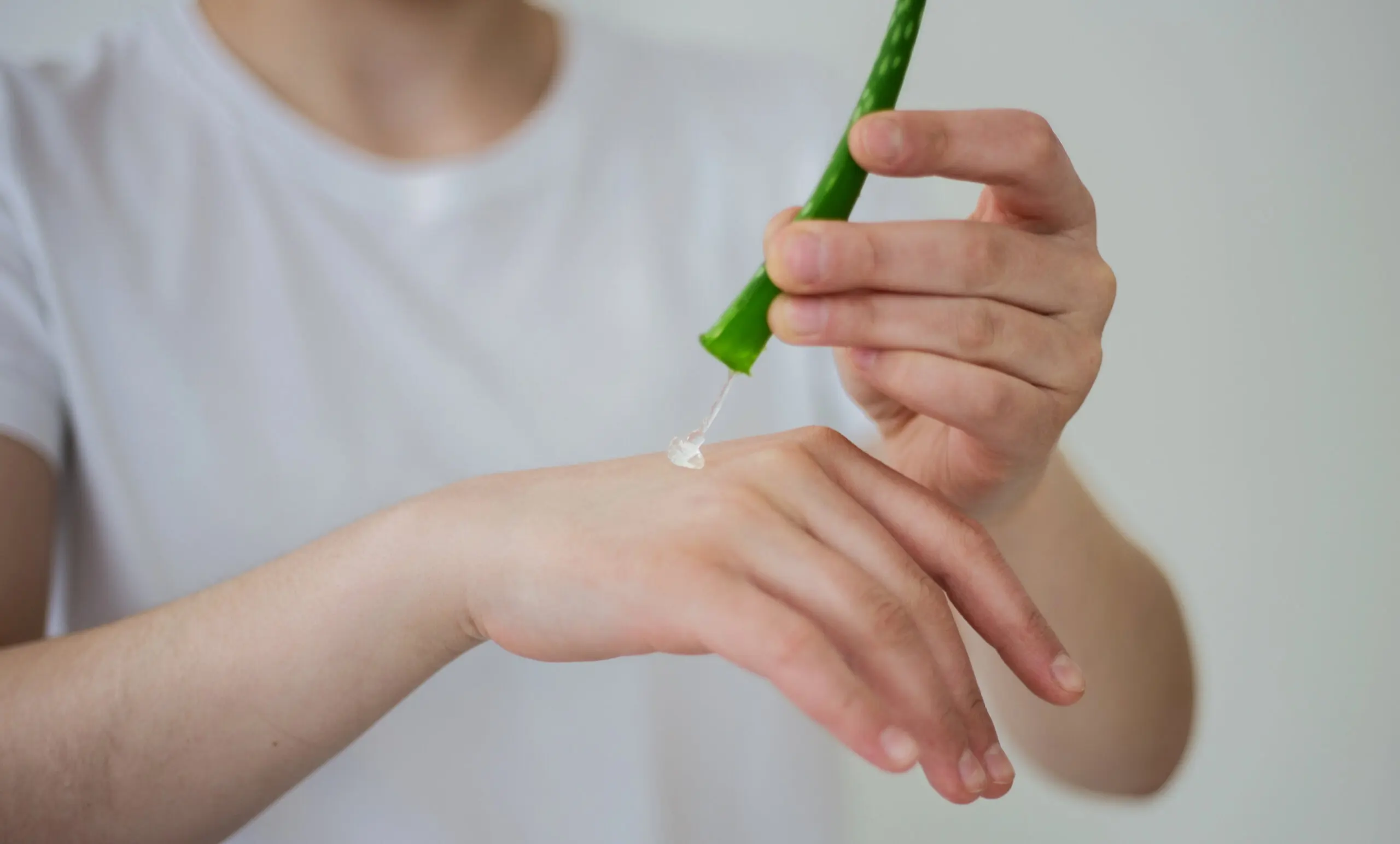
5. Rosemary
Rosemary blooms almost all year round, so it won’t be a problem to enjoy its pleasant aroma in the garden or inside the house, in a pot. This species is an ally to hiding gray hair, moisturizing the scalp, slowing premature aging of the skin, and can even be used for perfuming.
Prisma Tecnológico points out the goodness of rosemary softening and moisturizing the skin. By distillation and through its extracts for essential oil, it collaborates in the composition of toilet soaps. The active principles of this garden plant are concentrated in the leaves; it also possesses flavonoids, polyphenols, and diterpenes.
You make rosemary oil by adding its clean branches to a bottle with olive oil, closing the container, and leaving it to stand for a month in a dark place. After this time, strain the preparation and transfer it to a glass container. The way to use it is by applying it on the hair or the affected skin.
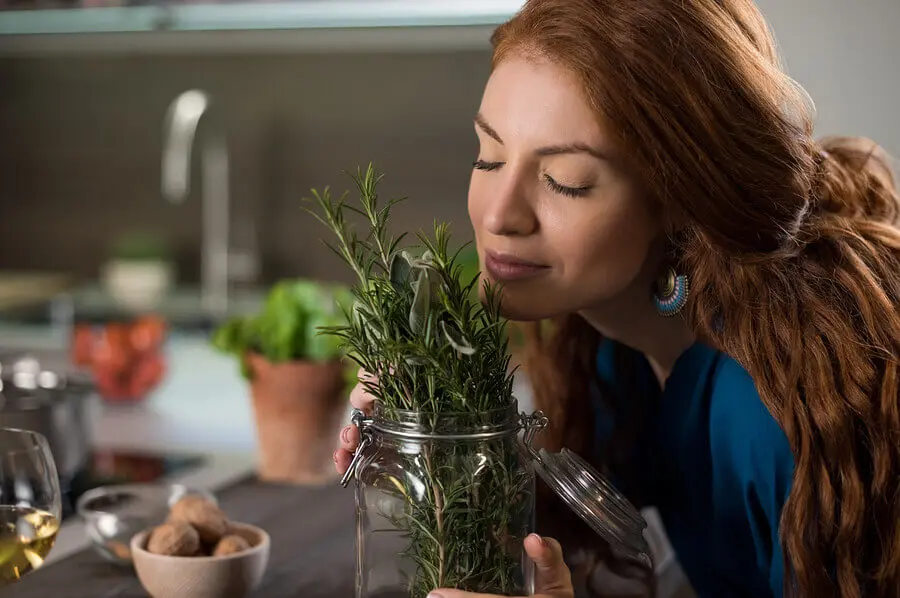
6. Lavender
Lavender is an evergreen, so it appreciates being outdoors to receive a good dose of sunlight. It tends to be suggested as an adjunct in the care of acne, wrinkles, and stretch marks treatments.
Do you want to make a handmade lavender soap? Well, you can! Its fragrance is the protagonist of these products, as well as creams to moisturize and relax. The flowers are used in exfoliating compositions, deodorants, and bath gels.
Its oil, combined with other herbs, such as rosemary, would delay the signs of skin aging. It promotes the synthesis of hyaluronic acid and collagen, according to the Scientific Journal of Aesthetics and Cosmetology.
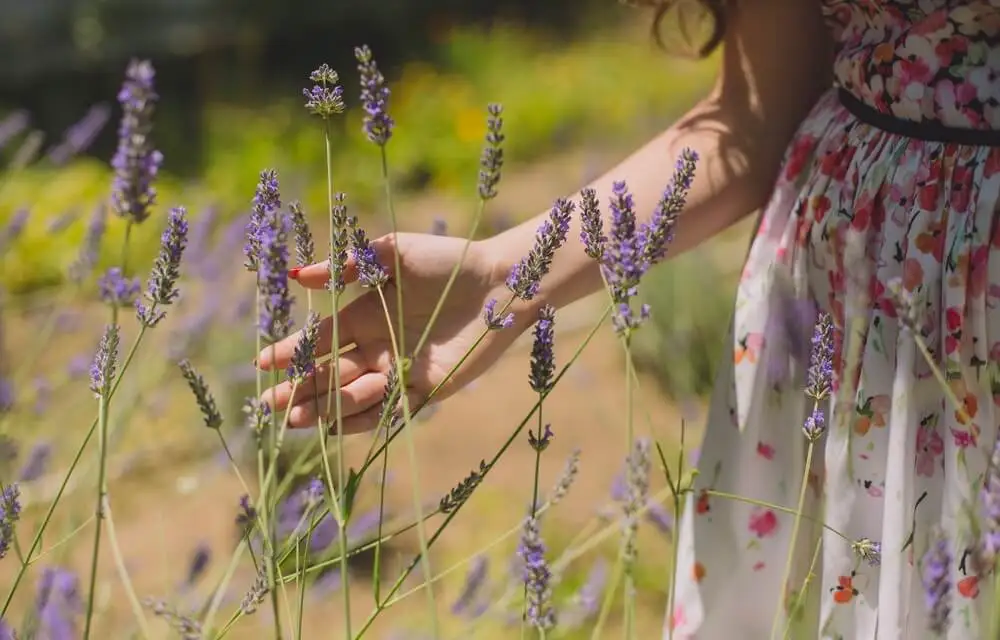
7. Saffron
The cosmetic activity of saffron compounds is useful for personal care, according to the Indonesian Journal of Pharmaceutics. In itself, it is useful for the following:
- Perfuming
- Protect from the sun
- Toning the skin
- Diffuse skin blemishes
The bulbs of Crocus sativus (its scientific name) require slightly calcareous soils with adequate drainage for its flowers to bloom between October and November. The raw material of this plant is used in the manufacture of cleansing creams.

8. Calendula
The Multidisciplinary Institute of Digital Edition highlights research on the bioactive compounds found in the extracts of the marigold flower. These are integrated into cosmetics to make eye contours and other substances that refresh the skin after exposure to the sun.
The scientific database Cosmetics Info indicates the use of calendula in oil for skin conditioning and as an ingredient in perfumes. The flowers and leaves are also used on corns and warts, as well as to combat oily complexion.
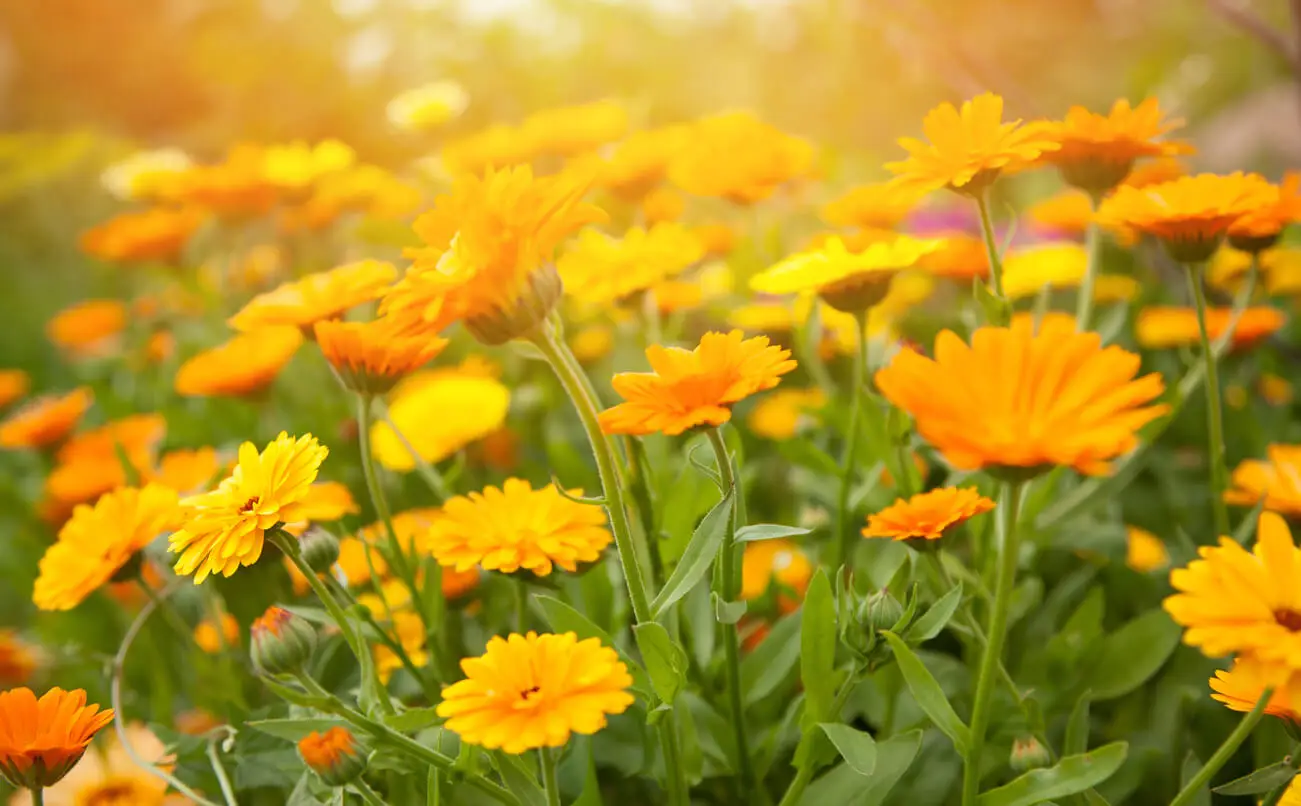
9. Sage
Sage water, leaves, flower, and stem extract, as well as oil, are useful in colognes, shampoos, and depilatory creams, according to Cosmetics Info. This plant demands sun and humid soils, so capillary irrigation is recommended.
It grows outdoors, although it survives indoors. Reproduction is by seeds, cuttings, or seedlings. If you have some specimens in the garden, you could transplant some into pots.

Like this article? Read more here: Learn How to Cleanse Your Home with Sage
The value of a garden with cosmetic plants
By boiling, crushing, grinding, or applying in its original form, many simple-to-grow plants can help us to take care of our skin and hair. In fact, they are known as phyto-ingredients – i.e. all plant raw materials processed in cosmetic and pharmaceutical recipes.
Hence the popularity of cosmetic gardens. They’re cheaper and just as profitable.
You can use botanical extracts grown by you at home. However, remember to always remember to consult a doctor about the topical application of plants, especially if you have a particular diagnosis.
All cited sources were thoroughly reviewed by our team to ensure their quality, reliability, currency, and validity. The bibliography of this article was considered reliable and of academic or scientific accuracy.
- Al-Snafi, A. E. (2016). The pharmacology of Crocus sativus-A review. IOSR Journal of Pharmacy, 6(6), 8-38.
- Alvarado González J, Arzate Vázquez I, Calderón Domínguez G, Chanona Pérez J, Domínguez Fernández R, Garibay Febles V, Gutiérrez López G, Welti Chanes J. El gel de Aloe vera: estructura, composición, química, procesamiento, actividad biológica e importancia en la industria farmacéutica y alimentaria. Revista Mexicana de Ingeniería Química. Vol. 11. Núm. 1. México; 2012. https://www.redalyc.org/articulo.oa?id=62024415003
- Almeida I, Cruz M, Salvador Ferreira M, Silva D, Sousa Lobo J. Actividad antiinflamatoria del extracto de la flor de Calendula officinalis L. Multidisciplinary Digital Publishing Institute. Suiza; 2021. https://www.mdpi.com/2079-9284/8/2/31
- Botta i Orfila, A., & Vila Casanovas, R. (2017). Evidencias para el empleo del aceite de rosa mosqueta en heridas y cicatrices cutáneas. Rev. fitoter, 133-143.
- Evaluación de seguridad de la manzanilla como ingrediente usado en cosmética. Revisión de literatura científica para comentario público. Estados Unidos; 2013. https://www.cir-safety.org/sites/default/files/chamom022013slr.pdf
- Extracto de caléndula officinalis. Cosmetics Info. Estados Unidos. https://www.cosmeticsinfo.org/ingredients/calendula-officinalis-extract/
- Extracto de raíz de Salvia officinalis (salvia). Cosmetics Info. Estados Unidos. https://www.cosmeticsinfo.org/ingredients/salvia-officinalis-sage-root-extract/
- Gonsales Spíndola D, Henriques Ribeiro Machado A, Rodrigues Leite Silva V, et al. Efectos antienvejecimiento de los aceites esenciales de lavanda, romero y árbol de té en fibroblastos dérmicos humanos. Revista Científica de Estética y Cosmetología. Vol. 1. Núm. 1. pp. 1-7. Brasil; 2020. https://www.mendeley.com/catalogue/0712272c-5370-3812-b5de-90d4af8cd60d/?utm_source=desktop&utm_medium=1.19.4&utm_campaign=open_catalog&userDocumentId=%7B388b165c-72fe-40a9-94d3-6b06dbd1daa5%7D
- Lin T, Santiago J, Zhong L. Efectos antiinflamatorios y reparadores de la barrera cutánea de la aplicación tópica de algunos aceites vegetales. Revista Internacional de Ciencias Moleculares. Suiza; 2018. https://www.mendeley.com/catalogue/f527efe7-555c-38de-8636-6bca54d7a165/?utm_source=desktop&utm_medium=1.19.4&utm_campaign=open_catalog&userDocumentId=%7B8123b9a0-2416-47d5-bf3d-78a9b492f3e4%7D
- López Luengo M. Áloe vera. Offarm. Vol. 23. Núm. 9. pp. 96-100. España; 2004. https://www.elsevier.es/es-revista-offarm-4-articulo-aloe-vera-13067351
- López Luengo M. El romero. Planta aromática con efectos antioxidantes. Offarm. Vol. 27. Núm. 7. pp. 60-63. España; 2008. https://www.elsevier.es/es-revista-offarm-4-articulo-el-romero-planta-aromatica-con-13124840
- Mosquera Tayupanta T. La investigación en la cosmética natural. Universidad Politécnica Salesiana. Ecuador; 2015. https://dspace.ups.edu.ec/bitstream/123456789/19015/1/La%20investigacion%20de%20la%20cosmetica%20natural.pdf
- Moreira Mendoza K, Oyervide Vargas A, Pin Mera D, Pita Meza M, Riera M, Vélez Mendoza B. Obtención de aceite esencial de romero con fines cosméticos. Prisma Tecnológico. Vol. 10. Núm. 1. Panamá; 2019. http://portal.amelica.org/ameli/journal/324/3241314005/3241314005.pdf
- Pareja B. Plantas medicinales con aplicaciones en dermatología y cosmética. Folia Dermatológica Peruana. Vol. 7. Núm. 3-4. Perú; 1996. https://sisbib.unmsm.edu.pe/bvrevistas/folia/vol7_n3-4/plantas.htm
- Putri A, Putriana N, Nur’aini Y, Roniawati I. Reseña: La actividad del azafrán como ingrediente activo en cosmética. Revista Indonesia de Farmacéutica. Vol 3. Núm. 2. pp. 74. Indonesia; 2021. https://www.mendeley.com/catalogue/aeded694-96b8-3ff5-9870-a95787a6110e/?utm_source=desktop&utm_medium=1.19.4&utm_campaign=open_catalog&userDocumentId=%7B53e56452-30eb-47b8-9b7d-1cf79a9ba3fc%7D
- Ramírez G. Sábila, Aloe vera. Fitoterapia, revisiones monográficas. https://dialnet.unirioja.es/servlet/articulo?codigo=4956300
- Sharma, L., Chandra, M., & Puneeta, A. (2020). Health benefits of lavender (Lavandula angustifolia). International Journal of Physiology, Nutrition and Physical Education, 4(1), 1274-1277.
This text is provided for informational purposes only and does not replace consultation with a professional. If in doubt, consult your specialist.








